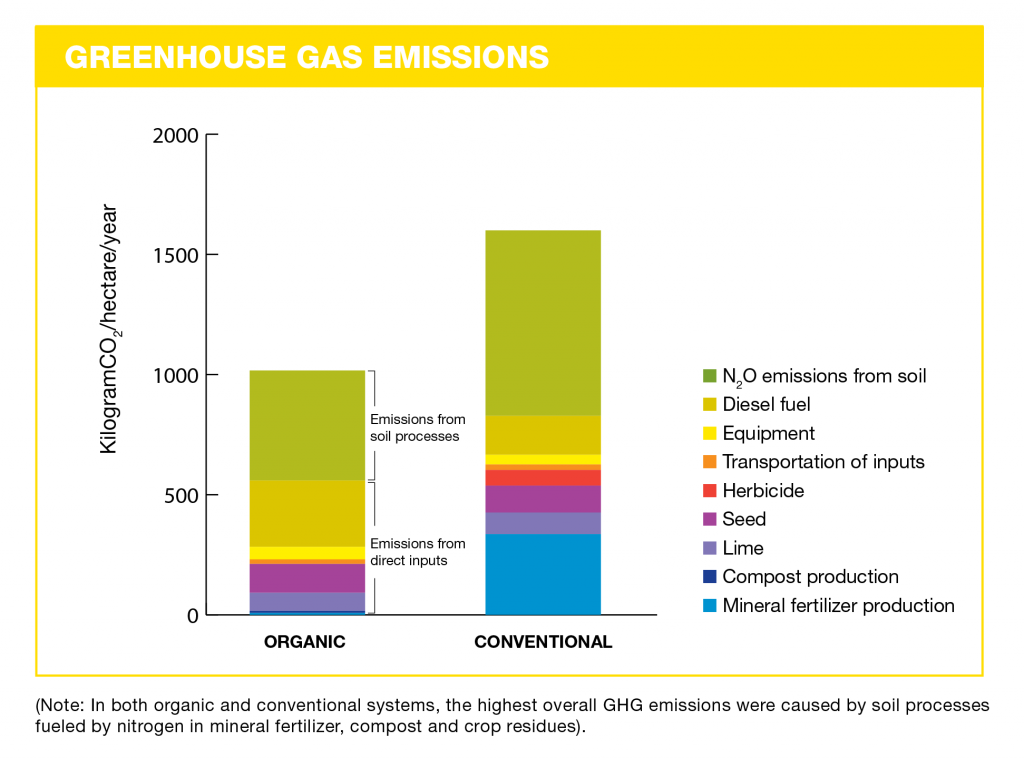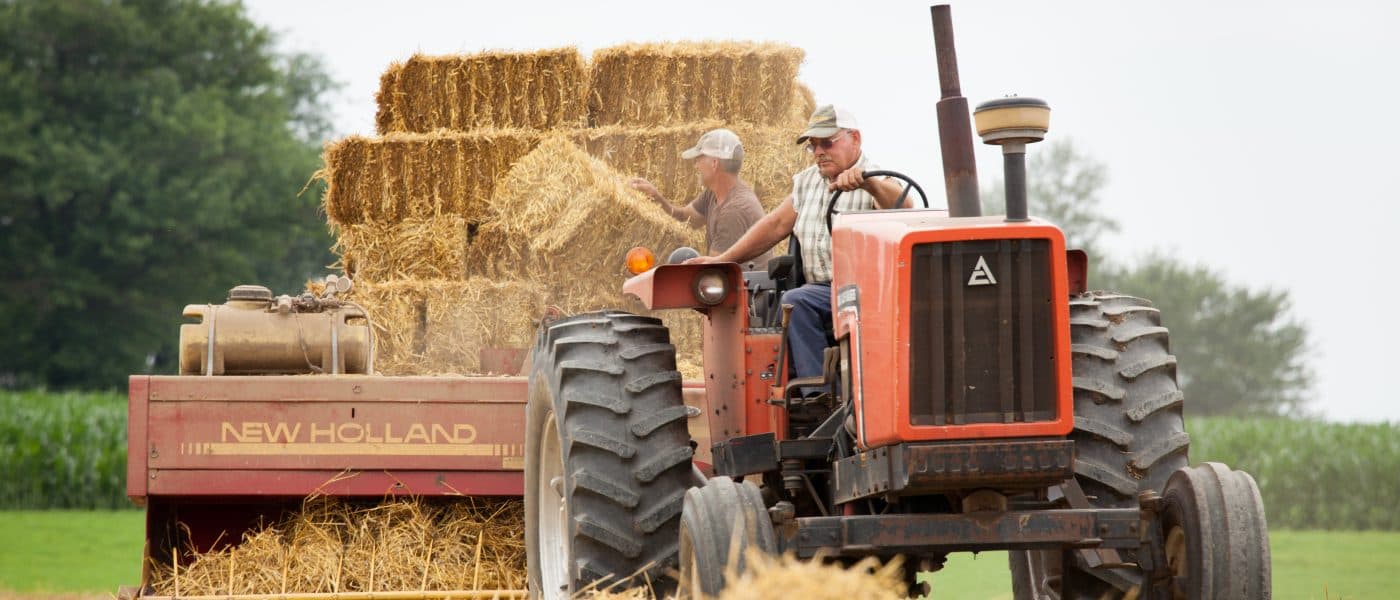The Frontlines of Climate Change
To nurture their crops and sustain their livestock, family farmers depend on soil, water and air–resources that are greatly impacted by the changing climate. Situated on the frontlines of climate change, family farmers are all too familiar with extreme weather events caused by climate change. Across the country the challenges vary: In the West, severe drought has the potential to create a seismic shift in U.S. agriculture, while in other areas of the country record floods have pushed farm businesses to the brink.
The prevailing industrial system of agriculture contributes to climate change significantly. But family farmers practicing sustainable agriculture are an essential part of the climate solution. Farming systems that build soil, recycle nutrients and water, reduce chemical inputs and enhance biodiversity offer the greatest potential for a resilient food and farm future. Local and regional food systems are essential for climate change adaption and innovations in on-farm renewable energy are key to shifting to a low carbon economy.
How Did We Get Here?
Greenhouse Gases: Too Much of a Good Thing
The greenhouse effect is a naturally occurring phenomenon whereby the sun radiates heat to earth, some of which gets trapped in the atmosphere by greenhouse gases (GHGs) like carbon dioxide (CO2), nitrous oxide, methane and water. This trapped heat keeps the earth warm and sustains life on our planet.
But today we have too much of a good thing. Since the industrial revolution, human activities like burning fossil fuels, deforestation and industrial agriculture have increased levels of GHGs at an unprecedented rate. In fact, atmospheric levels of CO2, methane and nitrous oxide (N2O) are higher than at any other time in the last 800,000 years.[1] As a result, our atmosphere and oceans are warming, sea levels are rising, and extreme weather events have become more frequent and intense.
Farming: A Big Piece of the Puzzle
Agriculture contributes about one-seventh of global GHGs.[2] The United Nations estimates that emissions from agriculture, forestry and fisheries have nearly doubled in the past 50 years and could increase another 30% by 2050 if we don’t change course.[3] In the U.S., agriculture accounts for 9% of our total emissions[4] with the biggest sources as follows:
- Soil management, particularly the use of synthetic fertilizers, contributes 75% of U.S. N2O,[5] a gas 310 times more potent than CO2 at trapping heat.[6]
 Beef and dairy cattle are the largest “emitters” of methane gas, which they release during digestion. The amount and type of feed they consume greatly influences their methane emissions.
Beef and dairy cattle are the largest “emitters” of methane gas, which they release during digestion. The amount and type of feed they consume greatly influences their methane emissions.- Manure management produces 13% of farming’s GHG emissions.[7] Anaerobic conditions in lagoons or holding tanks exacerbate the release of methane and other gases, accounting for 80% of manure emissions.[8] Between 1990 and 2012, U.S. agricultural emissions increased by about 20%, likely from a dramatic rise in confined animal feeding operations (CAFOs) using liquid manure storage.[9], [10]
Beyond the farm gate, food processing, transportation, storage, and distribution also contribute to emissions. Regional and local food systems can radically decrease these emissions, and help promote a more sustainable food system from farm to fork.
Climate Change: Impact on Agriculture
Family farmers often feel the first shocks from devastated natural resources. When weather patterns become erratic, water is scarce, or soil health is compromised, farms take a hit.
Rising temperatures and precipitation variability have made traditional geographic zones for crops unreliable. As temperatures rise and zones shift north,[11] farmers may need to adjust the crops they plant. And while weather-sensitive crops like fruits and vegetables will be hit the hardest, high temperatures can lead to any crop’s failure.[12]

Compacted soil from a field of annual wheat (left) compared to soil from an adjacent prairie (right), which is porous to air and water and has rich crumb around perennial roots. Photo by Steve Culman.
Weeds and pests are also migrating north and impacting crops previously unexposed to them, just as techniques used to fight pests are losing their effectiveness. For instance the herbicide glyphosate is less effective in an atmosphere with higher CO2.[13]
Extreme weather events also reduce crop yields. In the summer of 2008, flooding in the Mississippi River devastated crops, causing nearly $8 billion in losses for farms across the Midwest.[14] Meanwhile, historic drought in the West has sparked billions of dollars in dairy, crop, and livestock losses.[15] Droughts impact forage for grazing livestock, and weather-related crop failures damage grain for feed. Heat stress is associated with reduced fertility and lower meat, milk and egg production, and even animal death. In 2010, heat stress reduced milk production so much that the dairy industry tallied a $1.2 billion loss.[16]
Solutions Rooted in Farmers
Farmers and ranchers are critical to climate change mitigation, and the solution is rooted in our soil.

Comparison of Wheatgrass and Wheat roots at the Land Institute, Salina, Kansas. Photo by Jim Richardson.
Farming methods that reduce chemical inputs and employ soil-building practices like crop rotation and rotational grazing help draw atmospheric carbon back into the earth and reduce fossil fuel-based GHG emissions. Farmers also lower their climate impact by using renewable energy to power their farms. In 2008, 17,358 farms produced on-farm renewable energy; by 2011, this number almost doubled, with solar and wind energy as the most prevalent sources of on-farm renewable energy.[17]
Farmers are innovating the use of methane digesters that break down manure into solids and gases. These anaerobic digesters capture methane before it can pollute the atmosphere and use it to fuel engines and generate electricity.[18] Some have criticized these digesters for propping up the factory farm system of agriculture, but they are becoming very popular among dairy operations in particular as a tool to decrease methane emissions.
Organic Agriculture Shows Promise
Organic agriculture prioritizes soil health and soil carbon building practices. It prohibits synthetic fossil fuel-based fertilizers, which generate over 304 million tons of GHG emissions each year.[1] Over 30 years, the Rodale Institute’s Farming Systems Trial (FST)® showed that organic fields emit 40% fewer GHGs than conventional ones for each pound of crop yielded (see chart below from Rodale Institute’s report The Farming Systems Trial: Celebrating 30 Years).
What is Farm Aid Doing?
Responding to climate change requires on-the-ground efforts from family farmers as well as policies that promote transformative and long-term solutions. Farm Aid supports solutions that foster agricultural resiliency, ensure equitable, democratic and locally controlled markets, and support diverse food systems across America’s landscape.
Farm Aid works with farmers so their voices are heard in local, state and national dialogues; helps farmers affected by natural disasters recover and rebuild through our Family Farm Disaster Fund; and funds organizations who advance farm-based solutions to climate change. Farm Aid also funds, and is a proud member of, the Rural Climate Network (RCN), which advances practical strategies to address the effects of climate change across the nation, and empowers rural leaders to generate and respond to state and national climate change policies.
In addition, Farm Aid helped create and bring family farmers to essential gatherings to advance practical on-the-ground solutions to climate change. In 2015, Farm Aid partnered with Texas Organic Farmers and Gardeners Association, Rural Advancement Foundation International – USA, National Center for Appropriate Technology, and the Farmers’ Legal Action Group to host the Texas Drought Summit. This meeting brought together farmers, ranchers and farm service providers to focus on immediate needs and long-term resilience strategies in a region facing prolonged climate extremes.
Sources
2. National Sustainable Agriculture Coalition (2009). Agriculture & Climate Change: Impacts and Opportunities at the Farm Level. Washington D.C. July 2009.
3. Food and Agriculture Organization of the United Nations. (2014). Agriculture’s Greenhouse Gas Emissions on the Rise. Rome, Italy. April 11, 2014.
4. U.S. Environmental Protection Agency (2016). Sources of Greenhouse Gas Emissions.
5. U.S. EPA. (2014). Overview of Greenhouse Gases: Nitrous Oxide Emissions. Washington D.C. April 2014.
6. Power, Crystal A. (2014) Sources of Agricultural Greenhouse Gases. August 2014.
7. U.S. Environmental Protection Agency. (2014). Sources of Greenhouse Gas Emissions: Agriculture Sector Emissions. Washington D.C. April 2014.
8. Alberta Environmentally Sustainable Agriculture Council. (2004). Manure Management and Greenhouse Gases. Alberta, Canada. June 2004.
9. Massey, Ray and Hannah McClure. (2014). Agriculture and Greenhouse Gas Emissions. University of Missouri Extension. June 2014.
10. U.S. Environmental Protection Agency. (2014). Sources of Greenhouse Gas Emissions: Agriculture Sector Emissions.
11. U.S. Department of Agriculture. (2013) Climate Change and Agriculture in the United States: Effects and Adaptation. USDA Technical Bulletin 1935. February 2013.
12. National Sustainable Agriculture Coalition. (2009).
14. U.S. Environmental Protection Agency. (2013). Agriculture and Food Supply: Climate Impacts on Agriculture and Food Supply. Washington D.C. September 2013.
15. Howitt, R, J. Medellín-Azuara, D. MacEwan, J Lund and D. Sumner. (2014). Economic Analysis of the 2014 Drought for California Agriculture. Center for Watershed Sciences, University of California, Davis.
16. Key, Nigel, Stacy Sneeringer, and David Marquardt. (2014). Climate Change, Heat Stress, and U.S. Dairy Production. U.S. Department of Agriculture Economic Research Service. Washington D.C. Sep 2014.
17. Beckman, Jayson, Allison Borchers, and Carol A. Jones. (2013). Agriculture’s Supply and Demand for Energy Products. U.S. Department of Agriculture Economic Research Service. Washington D.C. May 2013.
18. Sanborn, Sarah. (2013). Harnessing The Hidden Power of Cow Manure. Quest Northwest. KQED.





